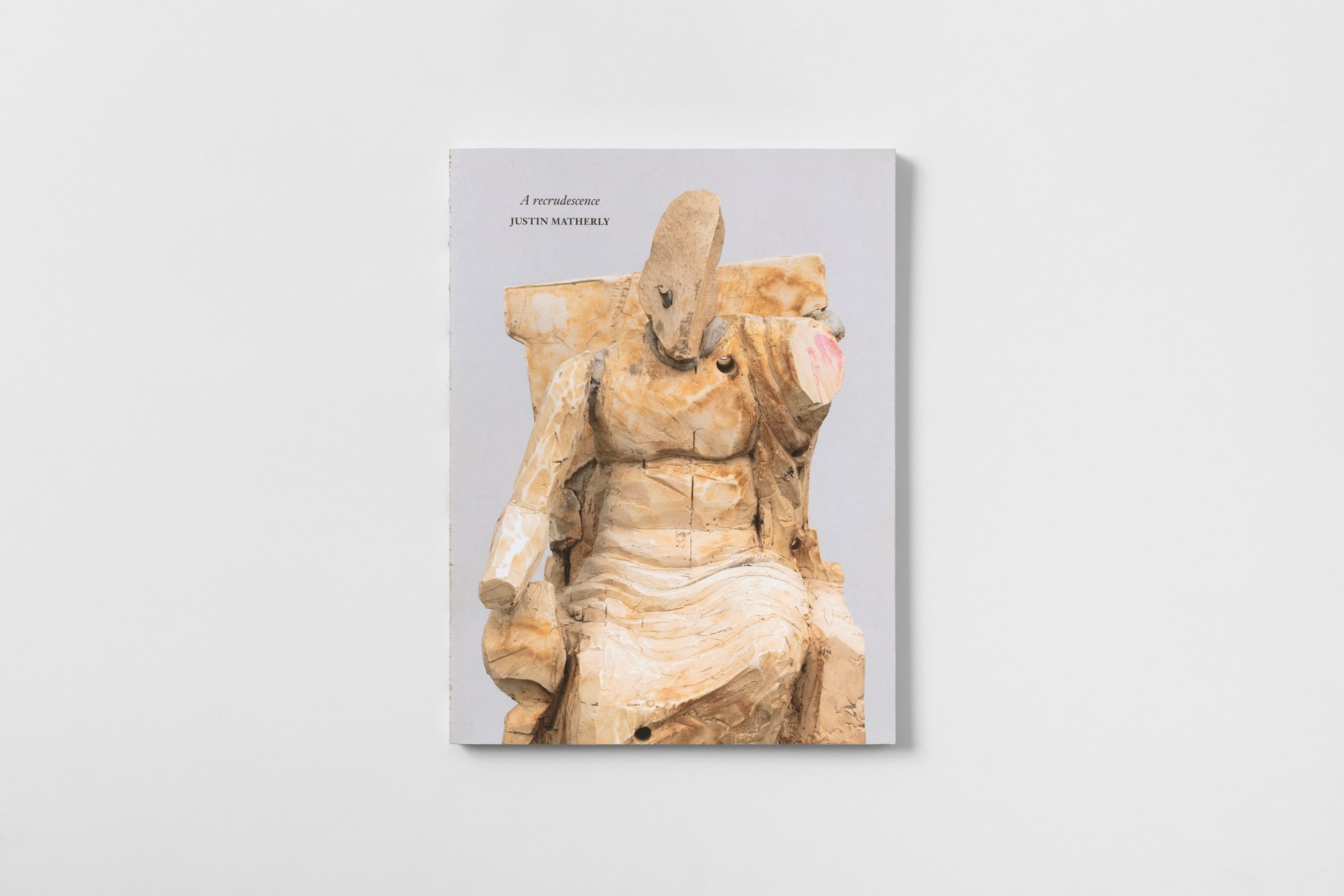
Paula Cooper Gallery, 2017
Softcover, 64 pages, 10 x 7.5 inches
ISBN: 978-0-9608210-0-6
$30.00
Published on the occasion of "A recrudescence", an exhibition of sculptures by Justin Matherly, at Paula Cooper Gallery, April 22–May 26, 2017, with essays by Anne Doran and Joseph Masheck.
Matherly’s sculptures take inspiration from works of classical antiquity that portray Asclepius, the ancient god of medicine, his son, Telesphoros, the symbol of recovery, and his daughter, Hygeia, the goddess of health. Cast in modified gypsum from molds previously used by the artist, the figures are revived as modern reinterpretations. Paradoxical icons of fragility and resolve, they stand on concrete casts of cardboard shipping boxes combined with ambulatory walkers. The works reference Friedrich Nietzsche’s idea of Eternal Recurrence: the paralyzing notion that all existence recurs infinitely across time and space. However, Justin Matherly’s figures symbolize the affirmation of recurrence as a condition of our contemporary modernity: a persistent oscillation between progression and regression through stasis.